క్రిస్ Grinter ద్వారా, on July 1st, 2010 And now for the even more infrequently reoccurring series, vox populi! For those without scarring high school memories of latin class (through no fault of my teacher) I’ll bring you up to speed – the title roughly translates to “voice of the people”. Here is another old e-mail that I’ve been saving. It is a 100% real message, but of course I have redacted the real names and addresses to protect the innocent. Enjoy! I also highly encourage submissions of your own-
Winter 2008:
“హాయ్, I’m so glad I found you. Now, I hope you can help me. 1982, while camping at an old gold mining camp in the Mendocino National Forest I was bitten by a large brown spider. It took three days for the venom to pass through my system. On day three I was 95% blind, the bite swelled to a large grotesquely deep red bump on my arm. I’ll never forget the 12 hours the venom attacked me. The price I payed to survive this spiders venom was…….to loose absolutely all my body fat. I spoke with a doctor from Santa Rosa by phone from a friends place in (some small CA town). He knew about this spider and couldn’t believe I suvived the venom when I told him I lost all my body fat. He also told me it was impossible for someone to survive loosing all their body fat in 12 గంటల. I reminded him that this was an impossible situation. He told me that this spider is being kept from the public. I believe this spider came from China or Russia. These spiders don’t share anything with other Cali spiders. They have big bodies and short stout legs. The female that bit me was about 4 inch’s and, had 5 males. Four years later, while living in the Hayward hills, I couldn’t believe my eyes, running across the floor, another one. This spider was about 6 inch’s. I know these spiders don’t climb walls or spin webs. They build nest’s, and obtain 4-5 males to protect her and find food. The female never leave’s the nest except…………when a larger female drives her out and, kills her males. This is when people are bitten by this spider, as she runs around looking for another nest. Bites are very uncommon. I wondered………….how big was the female that drove that 6 inch from her nest. And………….how big do they get. Can I find this spider on display at (your museum)? Is it possible to find all the information their is on this very dangerous spider?”
Continue reading Vox Populi, volume II
క్రిస్ Grinter ద్వారా, on June 26th, 2010 Welcome to volume eight of the inconsistently reoccurring series, ప్రెస్ జీనియస్. I came across ఈ వ్యాసం recently regarding an endemic Puerto Rican butterfly. Who can tell me exactly why this report is misleading? It may be a little trickier than the standard GOP (I suggest discarding any previously associated acronyms with those letters). Hint, just telling me the butterfly in the picture is from Malaysia is not the answer I’m looking for!
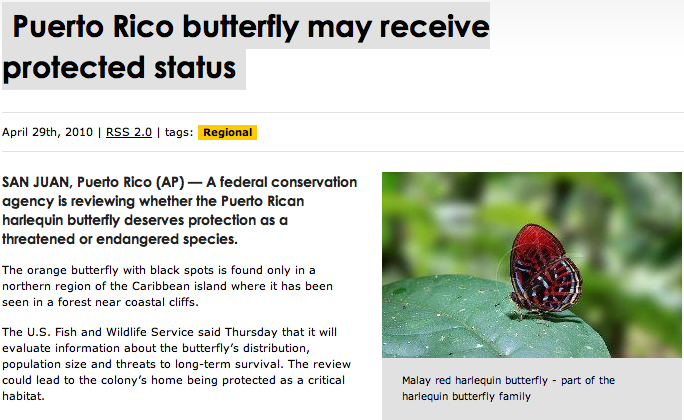
క్రిస్ Grinter ద్వారా, on June 23rd, 2010 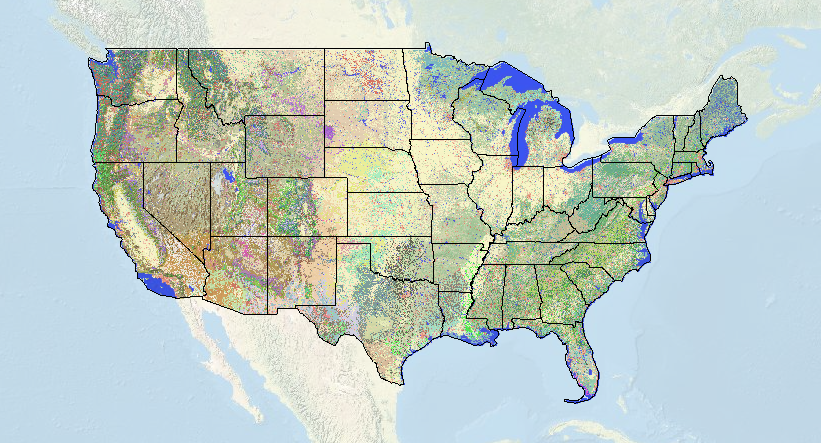
I’ve always wondered how to find the correct terminology for land cover in a given area. Usually, I just ballpark something along the lines of “oak chaparral”. But now I can use this awesome new map brought to us by the USGS/National Biological Information Infrastructure. The level of detail is amazing, and you can specify the degree of accuracy with a drop down tab (1-3). Now with a high-def US topo map I can see exactly where the largest stands of monterrey pine are (actually it’s a California Coastal Closed-Cone Conifer Forest and Woodland) so I can optimally place my trap this weekend.
Continue reading Landscape Cover Map
క్రిస్ Grinter ద్వారా, on June 18th, 2010 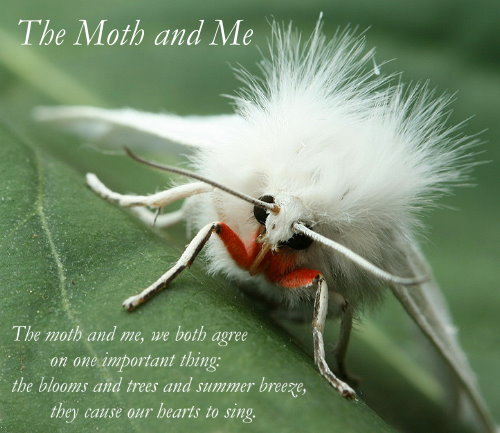
Welcome to The Moth and Me #12, and my first blog carnival. Despite blogging for a few months I have yet to take a look back and reflect on exactly how I became enamored with lepidoptera in the first place. Remembering a time or location where this happened is impossible, and like many of my colleagues and I’m sure many of my readers, I had a butterfly net and “bug cage” in hand as soon as I could walk. When it comes to entomology I believe almost everyone falls in love at first with a large and striking insect. For me it was a butterfly, naturally. I can remember staring for endless hours at the diversity of Ornithoptera and Papilio illustrated in Paul Smart’s famous book. Somewhere along the way in pursuit of something new I began to stray into the nocturnal world. Moths comprise the majority of the diversity of Lepidoptera; while there are nearly 11,000 species in the United States, only a few hundred are butterflies. This quickly opened a door (maybe into an abyss…) to the shocking abundance found everywhere around us. This amazing diversity has now drawn me deep into the biology and evolutionary history of the Lepidoptera. Editing these fourteen contributions of moth blogging together I just can’t help but to reflect back on some of my own mothing journey.

పిerhaps if I was a child in Europe this moth (Deilephila elpenor porcellus) would have been the first to catch my eye. Over at Urban Moths Ron Laughton has discovered the stunning diversity in his own back yard in much the same way as I did growing up here in the US. Take a look at the types of traps he has been using, most of which he constructed himself. One of the best behaviors of moths is their willingness to dive headlong into the light. Not too far from Ron, Mike Beale has been blogging british moths as well. It can be pretty amazing just how similar our two faunas are (a few moths actually are the same).
Continue reading The Moth and Me #12
క్రిస్ Grinter ద్వారా, on June 11th, 2010 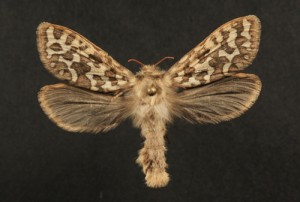
This moth is just about as rare as its paranormal namesake (except that it’s real) – it’s a Gazoryctra sp. in the family Hepialidae. They represent a basal lineage of the Lepidoptera and are commonly known as ghost moths or swift moths. Ghost – because males of some species are known to fly in true leks, where they hover up and down in grassy clearings at dusk while females observe. These same males also call for females with pheromones, a bit of a backward situation with insects. Swift- rather self evident, but boreal species have been known to be powerful flyers.
One of the features that help indicate this as a basal lineage is the placement of the wings on the body, some wing venation, reduced or absent mouthparts and the lack of a strong wing coupling device. These moths have a “jugum”, which is a small thumb like projection from the top of the hindwing. Other lineages of moths have a tight coupling mechanism known as the frenulum and retinaculum, where bristles hook the two wings together so they remain coupled during flight. When at rest the jugum folds around and probably helps keep the wings together – but not while in flight; the forewing is out of sync with the hindwing and flight is not dynamic (Scoble 1992).
In the Americas Hepialid biology is very poorly understood. Only a handful of life histories are described globally – all of which seem to be endophagous (boring) in plant root systems. Some early instar larvae may feed in the leaf litter or underground on the root system before entering the rhizome. Australia is fortunate to have a diverse and impressive fauna of Hepialidae – many are brilliantly colored and enormous (250mm or up to 12 అంగుళాలు!), and a bit better studied. Some larvae are even common enough that aboriginal tribes have used them as a staple food source.
But back to this moth in particular. I collected it in my black light trap last August up in the Sierra Nevada around 10,500 feet. The species is unknown, and may likely be new. The most frustrating part is that it is the only specimen known to science. The entire genus is very rare, except for one or two commoner species, only a few dozen specimens exist. So is it a female of a species described only from a male? A freakish aberration of an otherwise known species? Or maybe it is actually new. I’ve barcoded the DNA, that actually tells me nothing since there are zero sequences from any closely related species. నిజంగా, as far as I know, the other species in the Sierra haven’t even been collected in decades so I can’t even get a sequence from an older specimen. The icing on the cake is their behavior. They rarely, ఎప్పుడైనా, come to light – which may be a result of their crepuscular flight. On the right night they may be on the wing for 20-30 minutes, usually a female searching out a male, or a female flying to oviposit (likely just broadcast scatter their eggs on the ground). So come this late August I’ll be returning to the high Sierra with a few volunteers from the entomology department in hopes of seeing one whiz by me on the steep slopes. If I get some more, it might turn out to be impressive new species for California.
క్రిస్ Grinter ద్వారా, on June 11th, 2010 Who can see what’s wrong with ఈ వ్యాసం?

క్రిస్ Grinter ద్వారా, జూన్ 9 న, 2010 
ఈ ఇటీవలి వ్యాసం అమెరికా యొక్క ప్రకృతి లో ప్రముఖంగా పెంచి జాతులు కొన్ని అంచనాలు వద్ద రెండవసారి పరిశీలించటం తీసుకున్నారు, కొన్ని వంటి అధిక వెళ్తున్నారు 100 మిలియన్ (ఎర్విన్, 1988). రచయితలు నిర్వహించిన అంచనాల అంచనాలు పైన సూచిస్తున్నాయి 30 మిలియన్ సంభావ్యత <0.00001. వారి అంచనా స్థాయి మధ్య ఎక్కువగా ఉంది 2.5 మరియు 3.7 మిలియన్ జాతులు (తో 90% విశ్వాసం). ఈ ఈ అసాధారణ అంచనాలు గణనం న భారీగా ఆధారపడిన ఇచ్చిన కొంతవరకు సహేతుకమైన తెలుస్తోంది. ఉష్ణమండల ఆర్థ్రోపోడా సర్వేల ఆధారంగా వైవిధ్యం కోవడానికి స్పష్టంగా అనేక ఇబ్బందులు ఉన్నాయి – ఈ కాగితం మళ్ళీ phytophagous ఉపయోగించే (మొక్క తినే) అంచనాలు బీటిల్స్. వారు కాని phytophagous కీటకాలు కోసం ఈ పద్ధతులు ఖాతా లేదు అభిప్రాయపడుతున్నారు జాగ్రత్తగా, కానీ వారు వైవిధ్యం సంప్రదాయ biogeographic నమూనాలను అనుసరించే ఊహించుకోవటం. ఈ కొంతవరకు ఒక కొత్త భావన యొక్క నేను కళాశాల లో ఉన్నప్పుడు నేను parasitoids విచక్షణకు వ్యతిరేకంగా అని బోధించాడు ఆ ఇచ్చిన ఉంది మరింత వైవిధ్యంగా ఉష్ణమండల ప్రాంతాల్లో. ఈ పరికల్పన మరింత ఖచ్చితమైన ఆధునిక వర్గీకరణ పద్దతి యొక్క కాంతి లో తప్పుడు నిరూపిస్తున్నారు తరచుగా కానప్పటికీ ఉంది. అయితే నేను గర్వంగా ఒక పాత్రను సహాయపడింది parasitoid ప్రాజెక్ట్ యుఐయుసి వద్ద. సంక్షిప్తంగా, హోస్ట్ విశిష్టత ఇటువంటి microgastrine Braconids వేగంగా ప్రసారము సమూహాలు మధ్య దాచిపెట్టబడింది నిగూఢ వందల జాతుల ఉష్ణమండల వాతావరణాలలో మరింత తీవ్రమైన ఉంది (హైమెనోప్టెరా) – అదే ఇటువంటి వర్గాలతో అంతటా నిజమైన నిర్వహించారు.
కాగితం గురించి ఒక ఆసక్తికరమైన గమనిక లెపిడోప్తెర పందిరి సమూహాల ఆధారంగా ద్వితీయ అంచనా వారి చేరిక ఉంది. వారు ఒక భావించబడుతుంది) అన్ని లెపిడోప్తెర పందిరి అండ్ బి చూడవచ్చు) అన్ని leps phytophagous అని. ఈ అన్ని లెపిడోప్తెర అన్ని phytophagous ఉంటాయి పందిరి దొరకలేదు మరియు లేని స్పష్టంగా ఇచ్చిన చాలా సంప్రదాయవాద అంచనా. నేను వైపు సంఖ్యలు కలిగిలేవు, lep వైవిధ్యం యొక్క కొంత శాతం ఈ అంచనాల నుంచి మినహాయించాలి ఉండాలి. నేను కూడా ఒక అంగము న బయటకు వెళ్ళి రచయితలు భావిస్తాయి కనిపిస్తుంది (Novotny 2002) microlepidoptera morphospecies చేర్చలేదు – మరియు చాలా మటుకు మా ప్రస్తుత వర్గీకరణ అవగాహన సమృద్ధులు అంచనా. అయితే నేను ఈ యాక్సెస్ లేదు 2002 కాగితం, కాబట్టి నేను తప్పు కావచ్చు. ఈ లెపిడోప్తెర సంఖ్యలు ఉపయోగించి (Coleoptera అదే సర్వే) ప్రపంచ వైవిధ్యం హామిల్టన్ మరియు అంచనా వేయబడింది. ది. చుట్టూ వద్ద 8.5 లక్షలాది జాతులు ఆర్థ్రోపోడా.
నేను పదుల పదుల ఆ అసాధారణ అంచనాలు అంగీకరించినప్పటికీ (లేదా వందల) ఆర్థ్రోపోడా మిలియన్ల జాతులు బహుశా హాస్యాస్పదంగా ఉన్నాయి; నేను ప్రస్తుత పరిశోధన లక్షలాది జీవరాశులకు దిగువ పదుల అంచనాలు సాధ్యం అని సూచిస్తూ ఆ శిబిరం ఉన్నాను. రచయితలు ఉష్ణమండల జాతులు తక్కువ బీటా వైవిధ్యం ప్రదర్శించే వారి ఆవరణలో counterbalances అని పరిశోధన ఉన్నాయి విఫలమయ్యాయి (Novotny 2002, 2007). అదే పత్రికలో, ప్రకృతి 2007, Dyar మరియు. ది. గతంలో ఊహించినట్లుగా కంటే అమెరికన్ ఉష్ణమండలాలలో ఒక ఎక్కువ బీటా వైవిధ్యం ప్రదర్శించే సూచించాయి. గాని అది ఆస్ట్రేలియన్ ఉష్ణమండలాలలో బీటా వైవిధ్యం అంచనాల తప్పు అని చెప్పవచ్చు, లేదా వారు నవ్యఉష్ణమండల అడవులు జాతులు సమూహాల విరుద్ధంగా ఉన్నాయి. ఈ అన్ని అన్ని ఉష్ణమండల ప్రాంతాల్లో అంతటా జాతుల అంచనాలకు extrapolating ఇబ్బంది మాట్లాడుతుంది. ఈ అంచనాల న్యూ గినియా సమగ్ర క్రిమి సర్వేల ఆధారంగా ఉంటాయి, బహుశా వారు ఖచ్చితంగా అమెరికన్ ఉష్ణమండల అడవులు ప్రతిబింబించదు లేదు, మరియు ఈ సంఖ్య శ్రేణులు తక్కువగా ఉంటాయి.
తుది భావించినట్లు, అత్యంత assesments ఉష్ణమండల ఆర్థ్రోపోడ్లకు దృష్టి సారించారు. ఇది అన్ని చాలా సాధ్యమే తెలుస్తోంది అన్ని జాతుల సంఖ్య, బాక్టీరియా మరియు ఆర్కియా సహా, సులభంగా కోట్లాది దాటవచ్చు. కానీ ఆ సంఖ్యలు extrapolating మరింత అనిశ్చిత ఆర్థ్రోపోడ్లకు కంటే, మేము కలిగి జ్ఞానం తీవ్ర లేకపోవడం ఇచ్చిన.
క్రిస్ Grinter ద్వారా, on June 4th, 2010 
Can’t find a way to link the direct video (not even VodPod), but here is the link to the Daily Show site. How many physicists pulled their hair out when they heard this one? Yikes, he is the newly appointed spokesman. Don’t worry Neil, you’re not going anywhere after this.
Having not aired yet I can’t tell exactly how apologetic the show ఉంది, but it seems heavily focused on finding the “creator”. I can hear it in John Stewart’s voice when he pulls back from ripping into Freeman’s “god of the gaps” theory. Perhaps there was an edit and we missed the question where John Stewart asked “Morgan, can you define a logical fallacy for us… perhaps the god of the gaps one?” I believe that any physicist who ever says “god was responsible” says it with no deeper meaning than when Einstein famously evoked god’s dice. That’s to say, a non-literal and non-personal god found only in the beauty and splendor of nature.
క్రిస్ Grinter ద్వారా, జూన్ 2 న, 2010 
నేను కళాశాల లో నేర్చుకున్నాడు ఒక విషయం ఉంది ఉంటే, అది సులభంగా నాకు తప్పుతుందని ఎలా ఉంది. నేను నా కంప్యూటర్ పై పని చేస్తున్నాను, అయితే నేను నేపథ్యంలో నా TV చేస్తూనే ఉంటాయి, ముఖ్యంగా అర్థరాత్రి నేను సాధారణంగా నిద్ర వ్యతిరేకంగా గెలిచిన యుద్ధం పోరాడటం ఇచ్చేటప్పుడు. ఇతర రాత్రి ఏదో నా కంటి క్యాచ్: తన పెరట్లోని ఒక మనిషి పట్టుకొని Dowsing రాడ్లు. వాల్యూమ్ అప్, చెత్త ప్రవాహం తెలపండి. ఇది గృహ మెరుగుదల ఒక రకమైన మంచి కార్యక్రమం లో జడత్వం కేవలం ఒక ఫ్లాష్ ఉంది. నేను అలాంటి హిస్టరీ ఛానల్ లేదా ఒక డిస్కవరీ నెట్వర్క్ నెట్వర్క్స్ లో చెత్త ఆధారిత టీవీ అలవాటుపడు మారింది చేసిన (వారి ప్రదర్శనలు నాణ్యత వంటి రత్నాలు ఉన్నాయి “హాంటెడ్: దయ్యాలు మరియు పెంపుడు జంతువులు”), కానీ నేను BS నా స్థానిక PBS స్టేషన్ నాణ్యతకు చూడడానికి చిన్న ఆశ్చర్యపడ్డాడు.
పైగా “అమెరికన్ woodshop” స్కాట్ ఫిలిప్స్ ఒక అందమైన తోట పొదరిల్లు నిర్మిస్తోంది జరిగినది హోస్ట్. మీరు ఇక్కడ ఉచితంగా మొత్తం విషయం చూడవచ్చు: ఎపిసోడ్ 1609: కాలం ఆర్కిటెక్చరల్ నమూనాలతో మరియు ట్రిమ్. క్లిప్ సంఖ్య సమయం స్టాంపులు ఉన్నాయి, కానీ Dowsing మిడ్ పాయింట్ చుట్టూ వస్తుంది. అతను తెలియకుండా మీ యార్డ్ లోకి అడ్డదిడ్డంగా త్రవ్వించి హెచ్చరించారు నేల చెక్క సురక్షిత అవసరం పదార్థాలు చూపిస్తూ ఉండగా భూగర్భ నీటి, విద్యుత్ లేదా గ్యాస్ లైన్లు: ఘన సలహా. దీన్ని సో క్రమంలో మీరు తప్పక (మార్పులతో) “కోటు కరవాలము ముక్కలు తీసుకొని, ఏదైనా చేస్తాను, ఒక వాటిని మలుపు “ది”. నేను ముందుకు నడుస్తూ బార్లు క్రాస్ – అక్కడ (వారు క్రాస్) – కుడి నీటిపారుదల లైన్ ఉంది. 9 బయటకు 10 ప్రజలు ఈ సామర్ధ్యాన్ని కలిగిఉన్నాయి, ఏ సందేహం లేదు, కానీ మీరు ఒక ప్రొఫెషనల్ లో కాల్ ఉండాలి“. నా అనువాదం “సరే అబ్బాయిలు, దీన్ని కొన్ని గై కాలింగ్ గురించి ఆందోళన లేదు, ఈ విధంగా దాన్ని దొరుకుతుందని”. నాకు చెప్పండి ఏమి తీవ్రంగా ఎవరికి అది మంచి ol ఇచ్చే ముందు ఎవరైనా అధికారం ఇవ్వడానికి అని అర్ధరాత్రి గృహ మెరుగుదల కార్యక్రమం గడియారాలు వ్యక్తి’ కళాశాల ప్రయత్నించండి? మేము ఒక క్షణం మంజూరు ఒకవేళ ఆ 9 బయటకు 10 ప్రజలు ఈ చేయగల, ఒక వ్యక్తి గురించి ఇతరులు ఏమి కాదు? అది బాధ్యతా రహితమైనవి మీరు శక్తి / నీటి / మురుగు / వాయువు మాత్రమే నివారించవచ్చు సూచించారు కాదు 90% సమయం? అయ్యో, ఆ ఇబ్బంది కలిగించే వాయువు లైన్ హిట్…
ఒక శాస్త్రవేత్త బీయింగ్, ఒక సంశయవాది మరియు ఒక procrastinator – నేను చేతిలో నా పని అధిగమిస్తారు స్కాట్ ఈ గురించి ఒక సందేశాన్ని రాశారు. నేడు ఆయన దయచేసి మాట్లాడుతూ సమాధానమిచ్చారు: (ఎక్సెర్ప్ట్)
“మన శరీరాలు విద్యుదయస్కాంత క్షేత్రాలు. ఒక రంగంలో అంతరాయం మరియు విషయాలు జరిగే…. నేను వారు పంక్తులు కనుగొనేందుకు ఉపయోగించే ఒక నగరం కార్యకర్త నుండి పేర్కొన్నారు టెక్నిక్ నేర్చుకున్నారు. ఒక కుహనా మేధావి నుండి. నా జట్టు ఈ సాంకేతికత యొక్క ఉద్దేశం ఉపయోగం చూసిన.”
క్లుప్తంగా, ఏ, మన శరీరాలు విద్యుత్ కాదు. అందరూ ఒక దిక్సూచి జరపవచ్చని, లేదా TV… వాటిని అప్ screwing లేకుండా. ఫ్రాంజ్ mesmer ఆలోచన వాడుకలోకి “జంతు అయస్కాంతత్వం” 18 వ శతాబ్దం యొక్క చివరి సగం (కూడా కనిపెట్టాడు “mesmerization” AKA సమ్మోహన) – మరియు అది అకస్మాత్తుగా బెంజమిన్ ఫ్రాంక్లిన్ మరియు ఇతరులు సత్యమైన చేసింది. నేను కూడా నగరం కార్మికులు ప్రభుత్వ పంక్తులు గుర్తించడం Dowsing ఆధారపడటం ఆ వినడానికి భయపడి ఒక బిట్ ఉన్నాను! కానీ ముందుకు తరలించడానికి, మాకు Dowsing పురాణాలు లోకి తీయమని తెలియజేయండి. నేను dowsing విషయానికి వస్తే కొంతవరకు ఒక సహజమైన సత్యాన్ని ఉన్నట్లు తెలుస్తోంది అంగీకరిస్తున్నారు, అయితే తప్పుడు శాస్త్రీయంగా ఉంది, ఇది బలవంతపు ఉంది. ఖచ్చితంగా… పైన విద్యుత్ విషయాలు భూగర్భ ప్రభావం సున్నితమైన తీగలు. మరియు వావ్, నీటి వెదుక్కోవచ్చు ఎవరు అన్ని ఈ కుర్రాళ్ళు చూడండి, లేదా పవర్, లేక… కోల్పోయిన ప్రజలు… లేక బాంబులు? సరే, ఈ సంభాషణ కోసం నీటి అంటుకుని వీలు.
(కొనసాగింది)
Continue reading An Uphill Battle
క్రిస్ Grinter ద్వారా, on June 1st, 2010 Just a few images of common California leps, taken along the coast range near Santa Cruz a few weeks ago. Starting to work my way through some photo backlog…

యూఫిడ్రైయస్ chalcedona
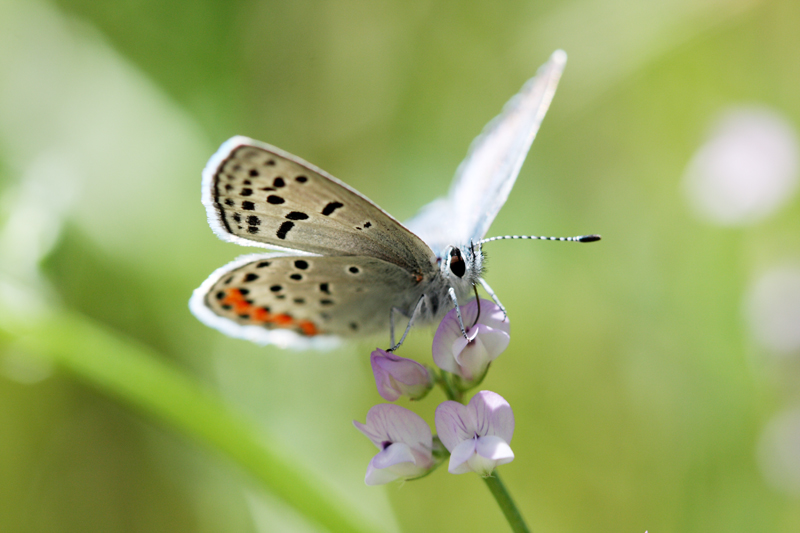
ప్లెబియన్ ACMO
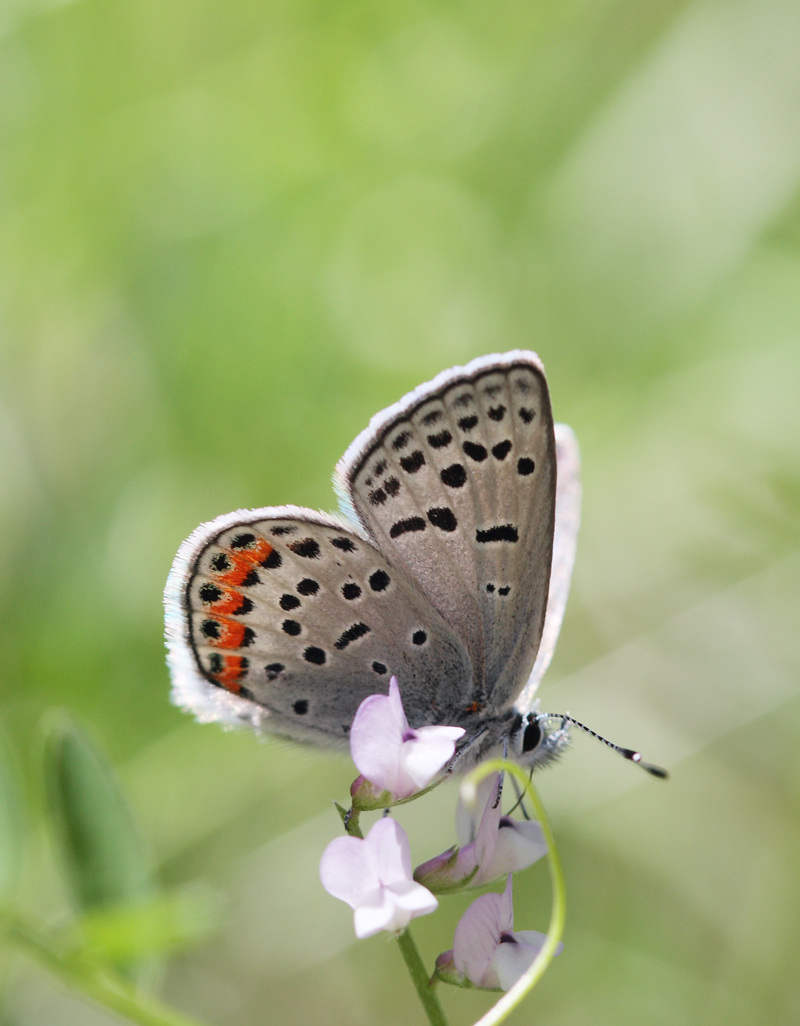
ప్లెబియన్ ACMO

Ethmia arctostaphylella on Eriodictyon sp.
One interesting note on Ethmia arctostaphylella – the name is a misnomer, it does not actually feed on Arctostaphylos (Manzanita). At the time of description in 1880 Walsingham had found larvae pupating on leaves of manzinata and assumed it was their host plant. In Jerry Powell’s stunning monograph of the group he indicates this moth was reared from Eriodictyon – which happens to be the flower the moth is perched on. The two plants grow side by side, and it’s pretty easy to see how a wandering caterpillar finds its way onto a neighbor.
|
సంశయవాదం
|













